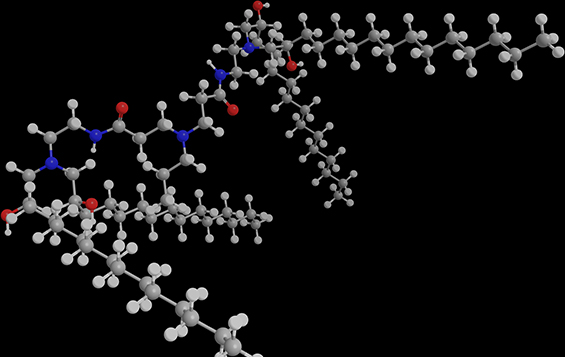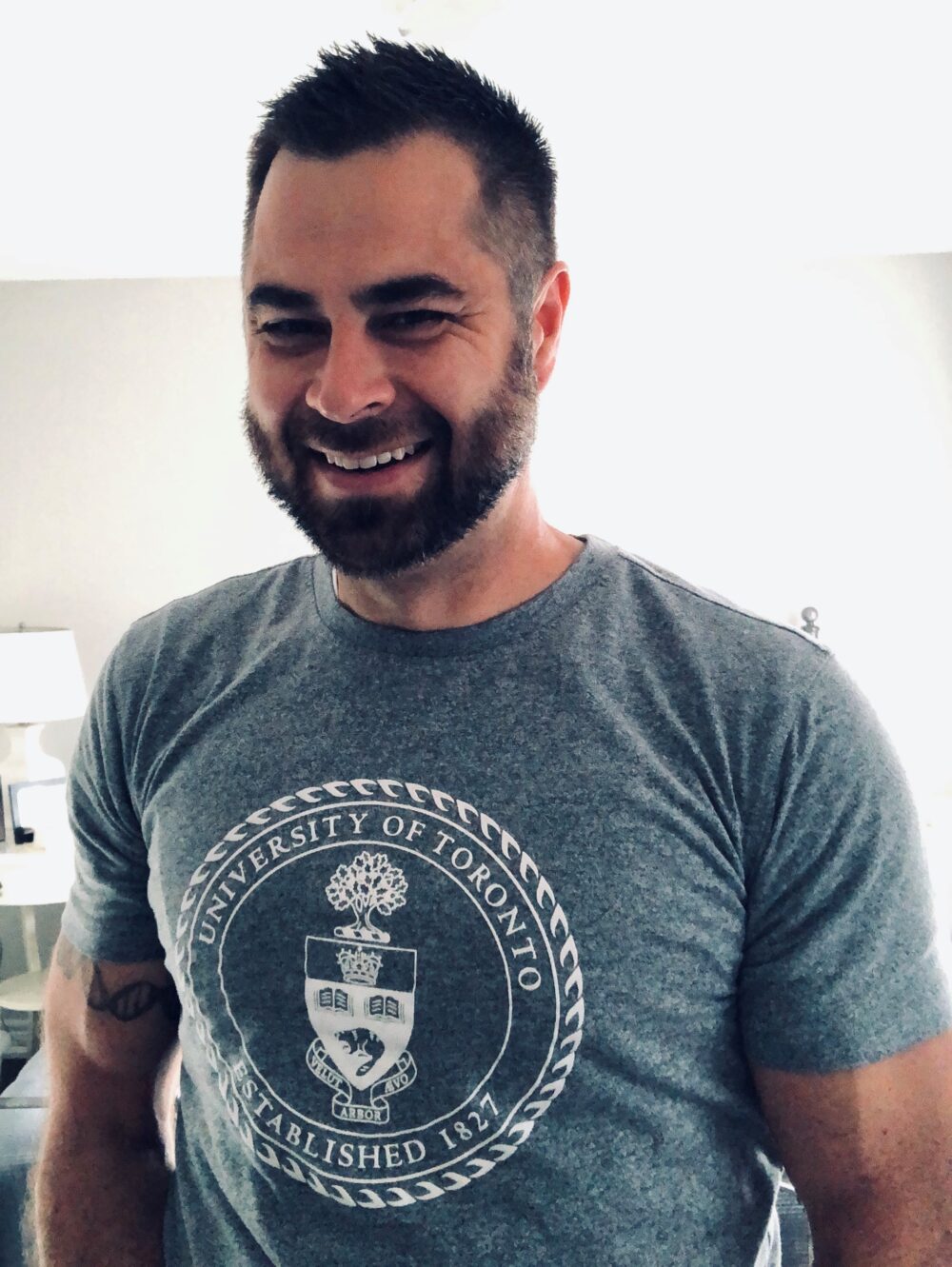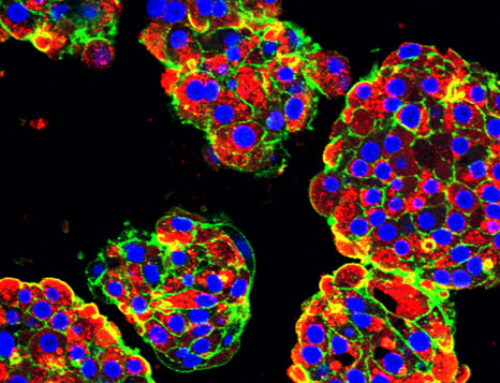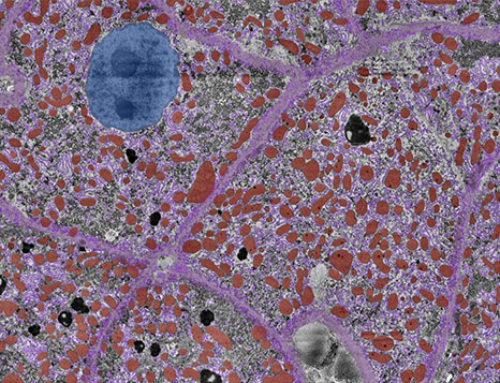
A render of the molecule used in the Omar F. Khan lab to deliver RNA. (Image provided by Omar F. Khan).
Plaque build-up in the arteries can be dangerous, often leading to a blocked artery and heart or arterial disease.
Researcher Clinton Robbins, a senior scientist at Toronto General Hospital Research Institute at UHN, leads a Medicine by Design team project focusing on how immune cells, primarily two types called monocytes and macrophages, contribute to this problem.
“They are white blood cells found in bone marrow,” Robbins says. “They fight infection but can also cause serious disease, such as atherosclerosis and abdominal aortic aneurysm, both of which are caused by plaque build-up in the arteries.”

Clinton Robbins, senior scientist, Toronto General Hospital Research Institute, University Health Network.
Disease can result from the body generating too many of these immune cell types, which can gather at disease sites and cause inflammation. Research out of the Robbins lab has demonstrated that controlling the numbers of those cells shows promising results.
Robbins, who’s also an associate professor of laboratory medicine and pathobiology, says his work with Medicine by Design pushes him to think about how his work can benefit society.
“The focus on regenerative medicine has been important because it constantly forces you to ask how you apply what you’re learning for the benefit of people,” Robbins says.
To this end, he has partnered with Omar F. Khan, (assistant professor, Institute of Biomedical Engineering and Department of Immunology U of T), who is an expert in using nanotechnology (small chemical materials) to deliver RNA therapeutics that can silence, regulate, express or help edit genes.

Omar F. Khan, assistant professor, Institute of Biomedical Engineering and Department of Immunology, University of Toronto. Photo by Neil Ta.
Khan’s lab is using nanotechnologies to control chronic inflammation on-demand by simultaneously preventing excessive monocyte generation in the bone marrow and their exit into the blood.
Khan, whose U of T recruitment was supported by Medicine by Design, says that the Robbins team bring their expertise in biology to his technology work and vice versa.
“Connecting with them because of Medicine by Design is enabling me to hit the ground running and keep moving. With their animal models, we can begin to prove that our technology can work to improve people’s health.”
Back to “Five ways Medicine by Design is transforming treatment for cardiac disease.”


